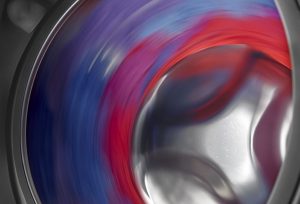3 Common Washing Machine Problems
Let’s take a look at three common washing problems that tend to crop up after a few years of ownership:
1. The Washer Won’t Start
When the washing machine does not start easily, there are a few possible causes, and some of these problems can be fixed without calling a repairman. First, check that the power cord is still connected to the outlet because it can work free when the washer is operating. If it is loose, simply plug it back in, turn on the power, and you may be ready to go. If the washing machine is tripping the breaker, make sure it’s flipped into the “On” position to restore power.
Another common issue is a faulty lid switch. Modern washing machines are designed to stop the wash cycle if the lid opens as a safety feature. A lid switch is a small plastic part that’s installed under the cover, and if it fails, the washing machine will not work. This part is easy to replace, make sure you have the correct part number, and you can fix the problem in minutes.
If the washer shuts down intermittently, this may mean that the motor is overheating and it needs time to cool off before it works again. The best solution to these problems is to hire a repair technician to replace the motor for you.
2. Strange Odors
If you can detect a moldy or musty odor in the washing machine drum, this is a sign that there may be bacterial growth inside the washing machine. There are a couple of reasons why this may happen, and there are some simple fixes that you can attempt to get rid of the odor.
Many people don’t check or clean the drain pump filter on their washing machine regularly. This is a mistake because many small items, such as buttons, coins, receipts, and more, can become caught in the filter. The drain pump filter should be cleaned at least once per month, and an interruption in water flow creates an ideal breeding ground for mold and mildew growth.
If you’re using too much detergent and fabric softener, excessive volumes of soap suds are created. The soap suds are needed to deliver the cleaning power to the laundry load. But, when the suds are created in excessive volumes, there are dirty residues left behind in the drum, which is an ideal environment for mold and bacterial growth. The easiest way to avoid this problem is to use less detergent and sanitize the washing machine.
3. Worn Components
A washing machine works hard, and over time, certain components will wear out, and a replacement will be required. There are several belts and hoses in a washer that will show signs of damage if you know what to look for. If a belt is slack or a hose is cracked, or the surface looks brittle, they should be replaced as a priority.
If your washing machine is no longer delivering the best performance, be sure to speak to a home appliance repair specialist, who can help you to restore the maximum functionality of your appliance.
